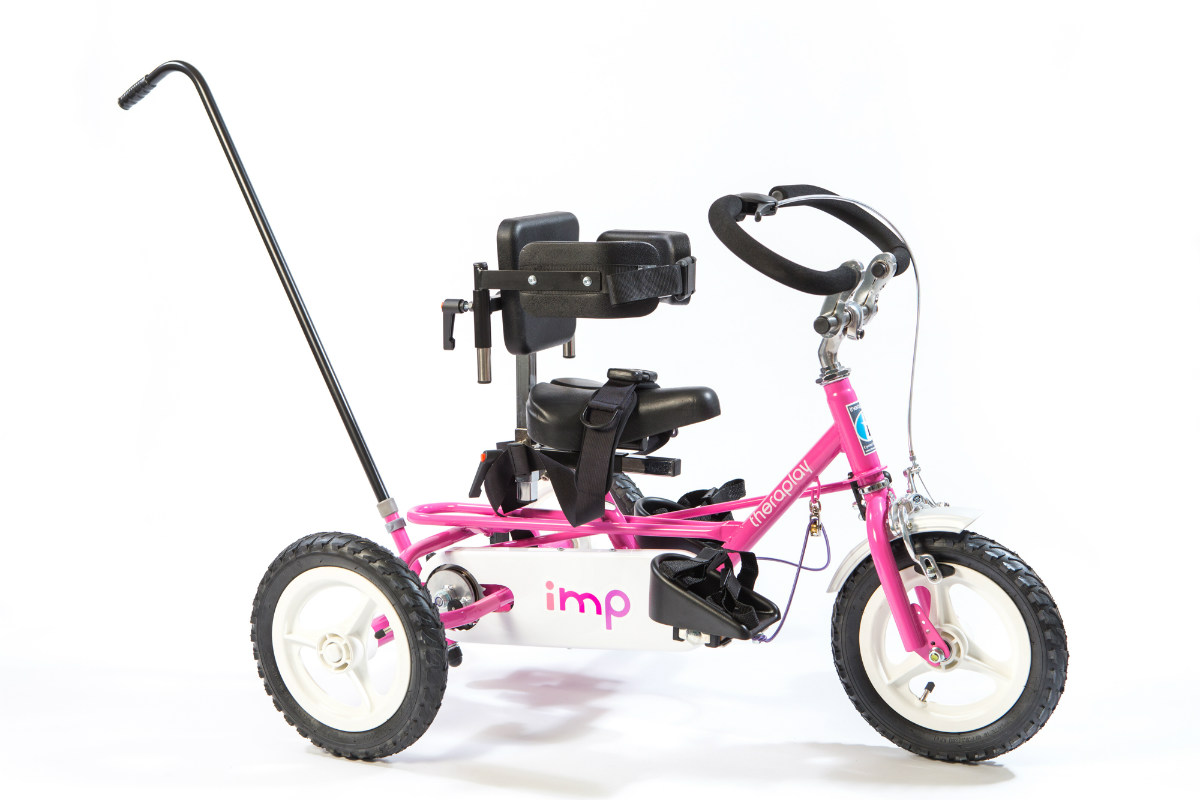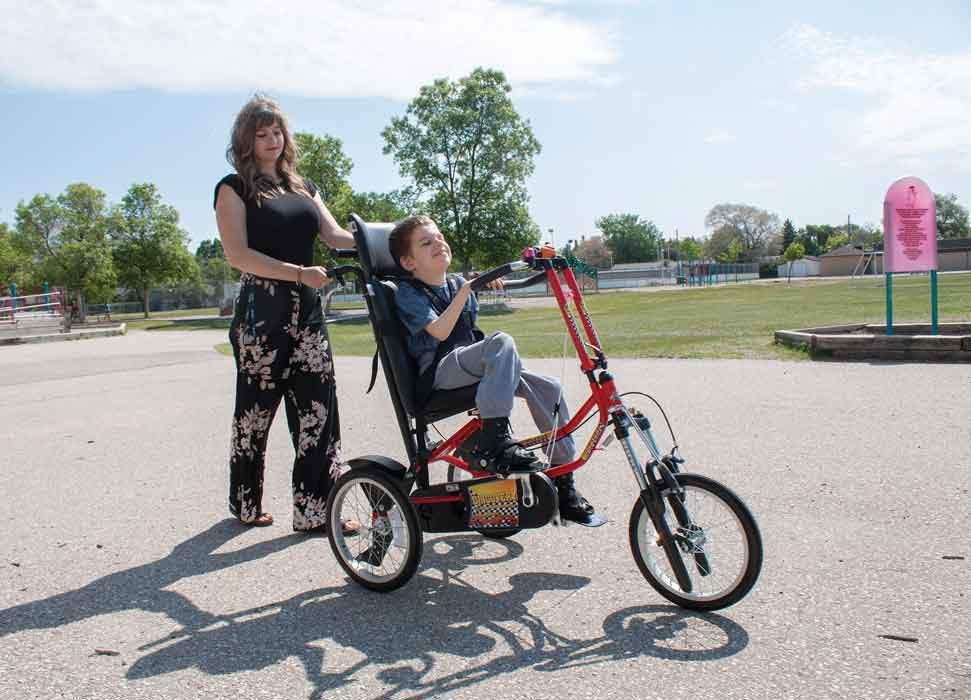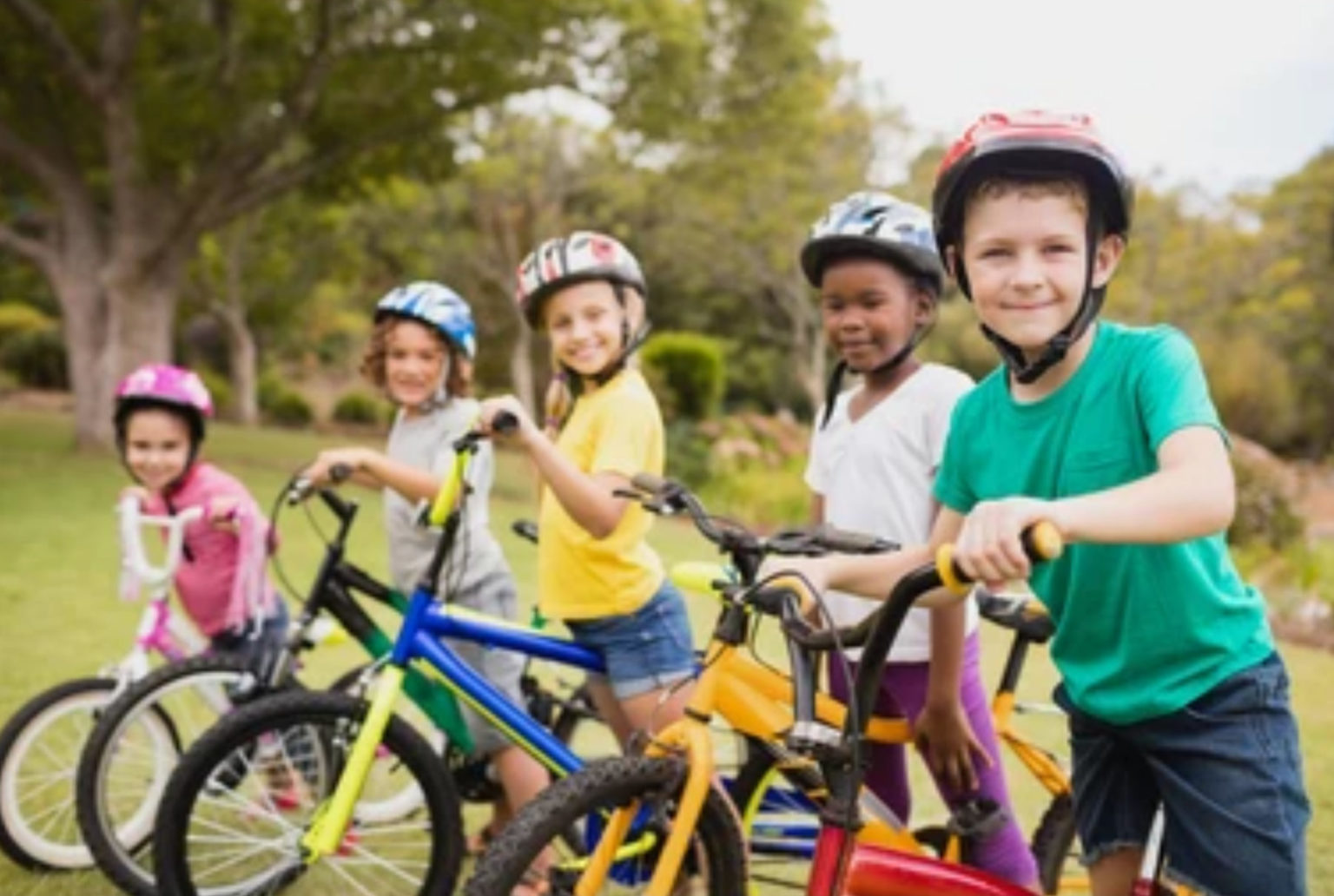Uncovering the Benefits of Adaptive Bikes for Autism
Adaptive bikes for autism have gained significant attention in recent years, as they offer a unique and effective way to address various challenges faced by individuals with autism. These specialized bikes cater to the specific needs of autistic children and adults, providing them with an opportunity to improve their physical, cognitive, and emotional well-being. This article will delve into the world of adaptive bikes for autism, exploring their benefits, selection process, and integration into therapy and education programs.
Cycling, in general, has been recognized as a beneficial activity for individuals with autism. The act of riding a bike can contribute to improved sensory integration, motor skills, and social interaction. Sensory integration refers to the brain’s ability to organize and interpret information from the senses, allowing for a coherent and adaptive response to the environment. Many individuals with autism experience difficulties in this area, which can lead to sensory sensitivities, motor coordination issues, and challenges in social situations. Adaptive bikes for autism can help address these concerns by offering a customizable and supportive platform for learning and practicing essential skills.
Selecting the Right Adaptive Bike for Autistic Children and Adults
When it comes to adaptive bikes for autism, choosing the right one is crucial for ensuring a positive and beneficial experience. Autistic individuals often have unique needs and preferences that must be taken into account during the selection process. By understanding the various types of adaptive bikes available and their specific features, caregivers, therapists, and educators can make informed decisions that cater to the individual’s abilities and requirements.
Recumbent bikes, handcycles, and trikes are some of the most common adaptive bikes suitable for autistic individuals. Recumbent bikes offer a laid-back seating position, reducing strain on the back and neck while providing excellent support for the legs and feet. This design can be particularly beneficial for autistic individuals with poor posture or low muscle tone. Additionally, recumbent bikes often come equipped with adjustable backrests and footrests, allowing for a customized fit and increased comfort.
Handcycles are another type of adaptive bike that can be beneficial for autistic individuals with limited lower body mobility or strength. Handcycles are designed to be powered by the arms rather than the legs, enabling users to enjoy the benefits of cycling without the physical demands of pedaling with their legs. Many handcycles feature adjustable seating and handlebars, ensuring a comfortable and secure riding position for the user.
Trikes, or three-wheeled bikes, provide increased stability and balance compared to traditional two-wheeled bikes. This design can be particularly helpful for autistic individuals with balance or coordination issues. Trikes often come in various styles, such as upright, recumbent, and delta (with one wheel in the front and two in the back), offering a range of options to suit different needs and abilities.
When selecting adaptive bikes for autism, it is essential to consider factors such as the individual’s age, weight, height, and cognitive abilities. Collaborating with occupational, physical, and speech therapists can help determine the most appropriate bike based on the individual’s therapeutic goals and needs. Furthermore, consulting with the bike manufacturer or a knowledgeable dealer can provide valuable insights into the bike’s features, benefits, and potential drawbacks, ensuring an informed decision is made.
Real-Life Examples: Top Adaptive Bikes for Autism
When it comes to adaptive bikes for autism, several reputable brands and models have gained popularity among autistic individuals, families, and therapists. Here are some of the top adaptive bikes suitable for individuals with autism:
Amtryke
Amtryke, a division of the National AMBUCS organization, offers a wide range of adaptive tricycles designed to meet the needs of riders with disabilities. Their bikes feature adjustable seats, handlebars, and pedals, allowing for a customized fit. Many Amtryke models also include additional support options, such as backrests, footrests, and harnesses, ensuring a safe and comfortable riding experience. User reviews highlight the bike’s durability, ease of assembly, and versatility.
Freedom Concepts
Freedom Concepts specializes in creating custom-built adaptive bikes tailored to the individual’s unique needs and abilities. Their product line includes recumbent bikes, handcycles, and trikes, all of which can be modified with various accessories and components to optimize the user’s experience. According to user reviews, Freedom Concepts bikes are praised for their high-quality construction, adjustability, and ability to accommodate growth and changing needs over time.
Strider
Strider is well-known for its balance bikes, which are designed to teach young children how to balance and steer on two wheels before introducing pedals. Strider’s 12 Sport Balance Bike is an excellent option for autistic children who may struggle with coordination and balance. The lightweight, low-to-the-ground design allows riders to focus on developing essential skills while building confidence and having fun. User reviews highlight the bike’s durability, ease of use, and adjustability, making it a popular choice for families and therapists alike.
How to Encourage Autistic Individuals to Ride Adaptive Bikes
Motivating autistic children and adults to start riding adaptive bikes can be a rewarding and enjoyable experience. By employing strategies that cater to their unique needs and preferences, caregivers, therapists, and educators can help autistic individuals reap the benefits of adaptive biking. Here are some practical tips to encourage autistic individuals to ride adaptive bikes:
Set Achievable Goals
Establishing realistic and incremental goals can help autistic individuals build confidence and skills over time. For example, start with short, supervised rides around a familiar environment, gradually increasing the duration and distance as their abilities improve. Celebrating each milestone, no matter how small, can foster a sense of accomplishment and encourage continued progress.
Incorporate Visual Schedules
Visual schedules can be an effective tool for autistic individuals, providing a clear and structured overview of upcoming activities. Creating a visual schedule that includes adaptive biking can help autistic individuals prepare for the experience, reducing anxiety and uncertainty. Using visual aids, such as pictures or symbols, can further enhance understanding and engagement.
Create a Comfortable Environment
Adaptive biking should be a positive and enjoyable experience. Ensuring that the bike is properly adjusted to the individual’s needs and preferences can help create a comfortable and secure environment. Consider factors such as seat height, handlebar position, and pedal tension, making adjustments as necessary to optimize the user’s experience. Additionally, selecting a familiar and quiet location for the initial rides can help minimize sensory overload and promote a sense of ease.
Encourage Social Interaction
Adaptive biking can be a social activity, offering opportunities for autistic individuals to interact with peers, family members, or therapists. Encouraging group rides or buddy systems can help build social skills and foster a sense of community. Furthermore, incorporating adaptive biking into school or community programs can provide additional opportunities for social engagement and support.
Provide Consistent Support and Encouragement
Consistent support and encouragement are crucial for autistic individuals learning to ride adaptive bikes. Offering positive reinforcement, celebrating achievements, and addressing concerns or challenges can help maintain motivation and foster a love for biking. Collaborating with therapists, educators, and family members can ensure a coordinated and supportive approach, promoting long-term success and enjoyment.
Safety Considerations for Adaptive Bike Users with Autism
Prioritizing safety is essential when using adaptive bikes for autistic individuals. By implementing essential safety measures and creating a secure environment, caregivers, therapists, and educators can help ensure a positive and successful biking experience. Here are some crucial safety considerations for adaptive bike users with autism:
Wear Helmets
Wearing helmets is a non-negotiable safety measure for all adaptive bike users, including those with autism. Ensure that the helmet fits properly, covering the forehead and sitting level on the head. Encourage the individual to wear the helmet during all rides, even if they are short or in controlled environments. Setting a good example by wearing a helmet yourself can also help emphasize the importance of this safety practice.
Adjust Bike Settings
Properly adjusting the adaptive bike to the individual’s needs and abilities can help prevent accidents and injuries. Regularly check the bike’s settings, such as seat height, handlebar position, and pedal tension, making adjustments as necessary. Ensuring that the individual can comfortably and safely operate the bike is crucial for their safety and enjoyment.
Practice in Controlled Environments
Starting the biking journey in a controlled environment, such as a quiet park or a closed-off driveway, can help autistic individuals become familiar with the bike and its operation. Gradually introducing new environments and challenges can help build confidence and skills while minimizing the risk of accidents or injuries.
Establish Clear Rules and Boundaries
Creating clear rules and boundaries for adaptive bike use can help autistic individuals understand what is expected of them and what they should avoid. For example, establish guidelines for where they can ride, how fast they can go, and how to navigate obstacles or intersections. Consistently reinforcing these rules can help promote safe biking habits and reduce the risk of accidents.
Monitor and Supervise
Close supervision is vital for autistic individuals using adaptive bikes, especially during the early stages of their biking journey. Regularly monitor the individual’s progress, addressing any concerns or challenges that arise. Providing guidance, support, and positive reinforcement can help ensure a safe and enjoyable biking experience.
Incorporating Adaptive Biking into Therapy and Education Programs
Adaptive biking has emerged as a valuable therapeutic tool for autistic individuals, offering numerous benefits that can be integrated into various treatment plans and educational programs. Occupational, physical, and speech therapists can incorporate adaptive bikes for autism in their sessions, fostering skill development, social interaction, and overall well-being. Additionally, schools and community organizations can integrate adaptive biking into their curriculums and programs, promoting inclusivity and providing opportunities for growth and recreation.
Occupational Therapy
Occupational therapists can utilize adaptive bikes for autism to address sensory integration, fine motor skills, and daily living activities. For instance, cycling can help autistic individuals develop balance, coordination, and body awareness. Additionally, adaptive bikes can be equipped with various accessories, such as handlebar grips or fidget toys, to support sensory regulation and focus during rides. Incorporating adaptive biking into occupational therapy sessions can help autistic individuals build essential skills while enjoying a fun and engaging activity.
Physical Therapy
Physical therapists can leverage adaptive bikes for autism to improve gross motor skills, strength, and endurance. By adjusting the bike’s settings to cater to the individual’s needs, therapists can target specific areas for development, such as leg strength, core stability, or balance. Regular adaptive biking sessions can contribute to improved physical fitness, increased independence, and enhanced overall quality of life for autistic individuals.
Speech Therapy
Speech therapists can incorporate adaptive biking into their treatment plans to target communication, language, and social skills. For example, cycling alongside a therapist or peer can provide opportunities for practicing verbal and non-verbal communication, turn-taking, and social interaction. Furthermore, adaptive biking can be used as a reward or motivational tool to encourage participation in speech therapy sessions and promote skill development.
Schools and Community Programs
Integrating adaptive biking into school curriculums and community programs can foster inclusivity, socialization, and physical activity for autistic individuals. Schools can incorporate adaptive bikes into physical education classes, recess, or after-school clubs, allowing autistic students to engage in age-appropriate activities alongside their peers. Community organizations can offer adaptive biking programs, providing opportunities for autistic individuals to build social connections, develop skills, and enjoy recreational activities in a supportive environment.
Overcoming Challenges and Finding Support for Adaptive Bike Users with Autism
While adaptive bikes for autism offer numerous benefits, autistic individuals may face unique challenges when using them. Addressing these challenges and providing appropriate support can help ensure a positive and successful biking experience. Here are some common challenges faced by autistic individuals and suggestions on how to overcome them:
Sensory Sensitivities
Autistic individuals may have sensory sensitivities that make it difficult to tolerate certain textures, sounds, or movements. Adaptive bikes with adjustable components, such as padded seats, customizable handlebars, or quieter pedaling systems, can help alleviate these sensitivities. Gradually introducing the bike and incorporating sensory-friendly elements into the environment can also help autistic individuals adapt to the biking experience.
Motor Difficulties
Motor difficulties, such as poor coordination or balance, can make it challenging for autistic individuals to operate adaptive bikes. Therapists, educators, and caregivers should consider selecting bikes with features that cater to the individual’s specific motor needs, such as recumbent bikes or trikes with additional support or guidance systems. Regular practice and skill-building activities can help improve motor skills and confidence over time.
Social Anxiety
Social anxiety or fear of new experiences can hinder autistic individuals from enjoying adaptive biking. Building a supportive and understanding environment, incorporating visual schedules, and setting achievable goals can help alleviate anxiety and encourage participation. Additionally, pairing autistic individuals with a trusted peer or mentor can help foster a sense of security and promote social interaction during biking activities.
Resources and Support
Various organizations, support groups, and online resources are dedicated to helping autistic individuals and their families access and benefit from adaptive bikes. These resources can provide valuable information on selecting the right bike, funding opportunities, and local programs that cater to the unique needs of autistic individuals. Some notable organizations include the National Mobility Equipment Dealers Association (NMEDA), the American Occupational Therapy Association (AOTA), and the Autism Society. Engaging with these resources can help autistic individuals overcome challenges and find the support they need to succeed in their biking journey.
Inspiring Stories: Success with Adaptive Bikes and Autism
Experiencing the positive impact of adaptive bikes for autism firsthand can be a powerful motivator for both autistic individuals and their families. The following inspiring stories highlight the achievements and transformative experiences of autistic individuals who have embraced adaptive biking in their lives:
Jack’s Journey
Jack, a 10-year-old boy with autism, struggled with motor skills and social interaction. After being introduced to an Amtryke adaptive bike, Jack’s parents noticed a significant improvement in his balance, coordination, and confidence. Regular biking sessions with his siblings and friends helped Jack build meaningful connections and develop essential social skills. Today, Jack participates in local biking events and serves as a role model for other autistic children in his community.
Sarah’s Triumph
Sarah, a young adult with autism, found it challenging to engage in physical activities due to her sensory sensitivities and motor difficulties. After trying various adaptive bikes, Sarah discovered the perfect fit with a Freedom Concepts recumbent trike. With its customizable settings and supportive design, Sarah was able to enjoy cycling without discomfort or frustration. Over time, Sarah’s strength, endurance, and self-esteem improved, and she now actively promotes the benefits of adaptive biking for autistic individuals.
The Power of Perseverance
For many autistic individuals, the journey to adaptive biking success involves overcoming obstacles and pushing through challenges. One such example is Tim, a teenager with autism who initially struggled with balance and coordination on his Strider adaptive bike. However, with the support of his physical therapist and family, Tim gradually built his skills and confidence. Today, Tim proudly participates in community biking events and has become an advocate for adaptive biking programs in his school and local community.
These inspiring stories demonstrate the transformative potential of adaptive bikes for autism. By providing opportunities for improved motor skills, sensory integration, and social interaction, adaptive bikes can significantly enhance the lives of autistic individuals, fostering a sense of independence, accomplishment, and joy.







